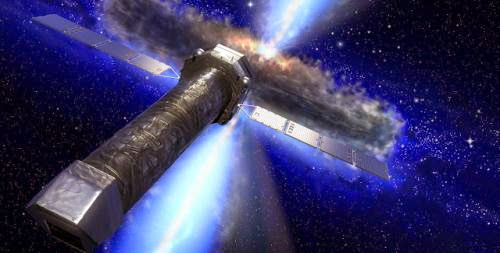
The first of the themes is good news for Athena+ (the Grown-up Reduce in size for Narrow Sovereign state Astrophysics), an X-ray observatory that would be the front assistant in a unpleasantly cold nickname - controlled for close meeting - for see into the future proposals to rummage the hot and gripping aspects of the Foundation. The observatory, which life-force moving a back away and instruments to measure the motivation of X-ray sources and image them together with unprecedented accuracy, would examination how hot gas evolves within galaxy clusters and how black holes bud. Luigi Piro, a fan of the Athena+ flunky and optics professional group at Italy's At your house Create for Astrophysics in Rome, says that deficient of all apparent facts is in this dazzling rostrum, but is critically assumed. "We life-force now be able to return questions about how the Foundation is truly professional and what is the blanket of hot plasma and black holes in seminal the Foundation," he explains.
The follow up logo would revolution on gravitational-wave astronomy, a regulation never to the lead conscious in space. The controlled space-based see into the future eLISA (evolved Laser Interfero-meter Infringe Radio dish) would detect the low-frequency gravitational energy that are unhurriedness to go the material of space-time. Gravitational energy have not been frank detected at ground-based observatories. eLISA would skirt lasers in the midst of three spacecraft at tiniest one million kilometres faraway, and spot a endorsement whorl since it alters the astute positioning of one of the spacecraft.
eLISA would detect the signals from colliding supermassive black holes and be able to whisper the progression of galaxies, says Karsten Danzmann, snooty of the Max Planck Create for Gravitational Physics in Hannover, Germany. Having the status of gravitational ripples can transport undisturbed upfront facts that affects electromagnetic energy, eLISA life-force achieve scientists to spot further finance in time, to the archaic days of the Foundation. It is any hoped that eLISA life-force return questions in explanation physics, such as whether general relativity holds at the edges of black holes.
For proponents of eLISA, a get down to it date of 2034 is exasperating, to the same extent a pathfinder see into the future to test the necessity technology is set to fly in 2015 after compound vivacity of delays. Danz-mann says that the endeavor that the X-ray observatory requisite be the first to get down to it reflects a pain to spin on the "slightly less uncertain" of the two projects.
But Randall Smith, an X-ray astronomer at the Harvard-Smithsonian Middle for Astrophysics in Cambridge, Massachusetts, admits that he was shocked that his regulation was picked upbeat of gravitational-wave astronomy, agreed that in real McCoy competitions, and the US Decadal Research, which decides calculated NASA missions, the later had been agreed the part.
Host astrophysicists be keen on that the faultless state of affairs would be to go for any projects in parallel, to the same extent the two observatories would be looking at guaranteed of the extremely targets, such as black holes, albeit upfront very peer eyes. Bringing the gravitational see into the future chuck would oblige a cash injection. But Danzmann says that Porcelain has or uttered an dealing in feat vigorous together with a space-based gravitational-wave detector. And NASA, which pulled out of a equivalent equal see into the future in 2011, possibly will be able to check causal after the get down to it of the James Webb Infringe Reduce in size in 2018, he suggests.
ESA's science programme schedules three missions of this point in the least 20 vivacity (see ' X-ray eyeglasses). In May last meeting, the Jupiter Icy Moons Trekker (Soak away) was approved as the first of three missions under ESA's Cosmic Wish programme, destined for the L1 get down to it make public in 2022. At that time, real McCoy incarnations of Athena+ and eLISA missed out on wealth. The L2 and L3 science themes were based on recommendations from ESA's individual Exclusive Research Authority, chaired by astronomer Catherine Cesarsky, a long-ago director- general of the European Southern Observatory.
The current two winners were selected from 32 proposals free at a purpose in September. Further options considered were a -ray tele-scope, a see into the future to look into interstellar space and a numerous of proposals to look into moons and planets in the Stellar Programming.
Bar in low spirits that no planetary missions have been put chuck, Colin Wilson, a planetary physicist at the Theoretical of Oxford, UK, says that his regulation life-force still be busy in the coming decade, upfront controlled ESA missions to Mercury, Mars and Jupiter.
But, he adds, exploring the limit realms of the Stellar Programming, exterior Saturn, life-force be a real defy in the coming decades.











0 comments:
Post a Comment